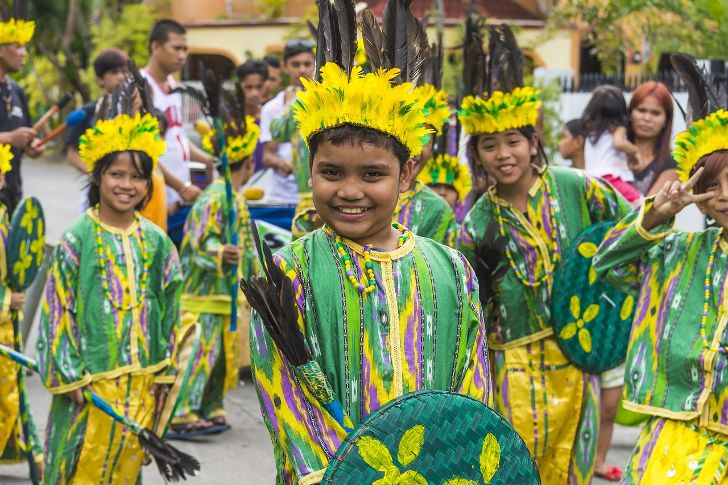The statue of the Santo Niño de Cebú (Child Jesus of Cebú) is one of the oldest religious artifacts in the Philippines and the oldest surviving Catholic relic in the country. It was presented to King of Cebú Rajan Humabon and his chief consort Hara Humamay in 1521 by the famous navigator and conquistador Ferdinand Magellan, who convinced the king and his wife to adopt Christianity and swear allegiance to the Spanish crown. In 1565, the Basílica Minore del Santo Niño (Minor Basilica of the Holy Child) was founded in Cebú in honor of the image. Its present building was completed in 1740.
Since the 16th century, pilgrims from all over the country have traveled to Cebú every year to worship the image of the Santo Niño and participate in the procession and masses in honor of the image. In 1980, the city government of Cebú held the first Sinulog Festival for pilgrims. It was organized by Dávid Odilao, then Regional Director of the Ministry of Sports and Youth Development. The event was a success and soon became the city’s signature festival.
Sinulog is one of the most popular festivals in the Philippines, attracting more than a million people from all over the country every year, which has earned it the nickname “the Grandest Festival in the Philippines”. Despite its religious origins, the festival is primarily known for its colorful processions and street parties reminiscent of Caribbean carnivals. The parties usually begin the night before the festival.
The main event of the Sinulog festival is a dance parade that depicts the arrival of the Spanish in the Philippines and presentation of the image the Santo Niño to the Cebú ruler. The name of the festival is a reference to the rhythm of the ritual dance performed by the parade participants. The word Sinulog derives from the adverb sulog, which can be loosely translated from the Cebuano language as “like the flow of water”. It describes the “two steps forward, one step backward” movements of the dance, done to the distinct beat of the drums.
Carnival groups representing different schools, cultural associations, and organizations take part in the colorful procession; they include guests from other cities and provinces. At the end of the festival, the jury awards prizes to the five brightest and most unusual groups: one of them is declared the winner, and four more get consolation prizes. In addition, the Sinulog Festival Queen is chosen and crowned every year.
The Sinulog Festival has been canceled at least twice since its inception. In 2021, all non-religious activities for the festival were canceled due to the COVID-19 pandemic, and the traditional novena masses were streamed from the Basílica Minore del Santo Niño on its Facebook page. The next year, dance performances were canceled due to Typhoon Rai that struck the country in December 2021; they were replaced by online activities to raise funds for victims of the typhoon.





